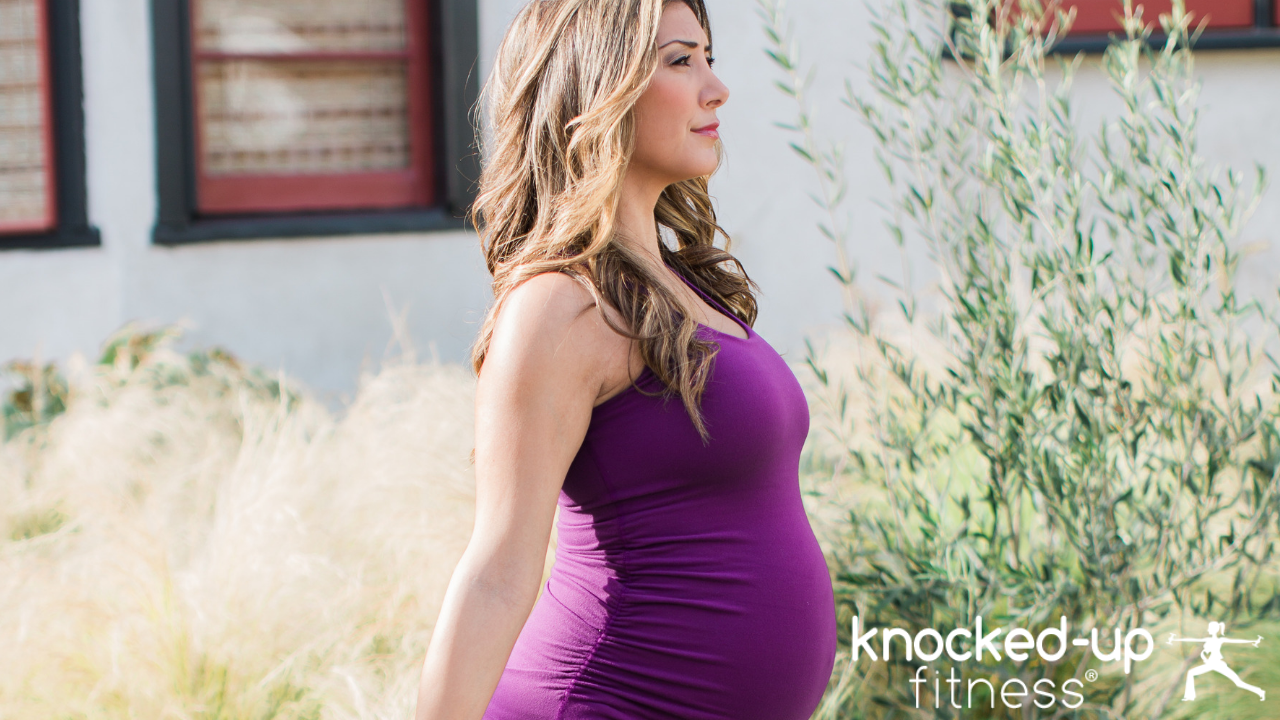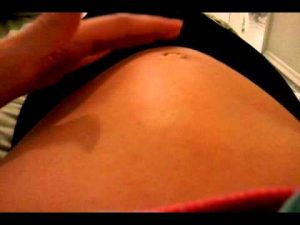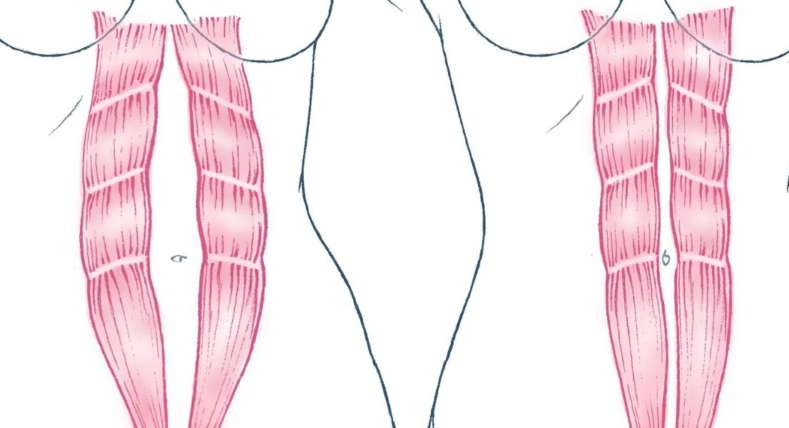Coning during pregnancy or coning of the belly during pregnancy. is when you see a ridge or bulge popping out down the midline of your belly. This typically occurs when doing an exercise incorrectly or an exercise that puts too much stress on the abdominals and should be avoided (see the image below for a visual). You can also see coning after baby if there is any abdominal separation (diastasis recti). Don’t fret!! I have some great tips for you below so keep reading… and join my Prenatal + Postnatal Membership for more!
NOTE: This is why you do NOT do traditional crunches during pregnancy. Once in your second trimester, you will always see coning during pregnancy doing crunches.
A pregnant belly should stay as round and smooth across your entire belly. If you see any coning of your belly that is a good indication of a couple of things:
- 1) You need to be sure your deep core muscles are activated properly.
- 2) You should avoid any exercise that causes coning during pregnancy and after pregnancy.
- 3) You have diastasis recti and need to follow #2 rule very strictly until you can heal your diastasis after baby.
- 4) And YES you can heal your diastasis after baby and even prevent further separation and possibly even decrease the separation during pregnancy – crazy concept but I’ve done it with many clients and you can too! Join me in my pregnancy membership here!
- 5) Always roll to your side to lay down and to get up instead of laying straight back which typically always creates coning towards the end of pregnancy. I do recommend to continue this after baby until your core strength is back and/or diastasis recti is healed.
In my Knocked Up Fitness® Guide to Pregnancy, I explain in detail how to activate your deep core muscles along with my Push Prep Method™ and Push Prep Method™ Video. When you truly understand how to engage your deep core muscles you can more easily minimize diastsis recti during pregnancy and repair after baby.
Another question that comes up around Diastasis Recti: “Does the gap have to close?”
Ideally, I like to see the gap close to 1 finger-width, which is the normal spacing between the rectus abdominals. However, when it comes to true diastsis recti you can actually push down into your abdominal cavity because there isn’t much fascial connection between your abdominal muscles. This is why learning how to activate your deep core muscles can help train your body to create good facial connection.
Even if you aren’t able to fully get the separation back together, it’s more important that you can create good facial tension. This means you may still have some abdominal separation of your rectus abdominals but you can no longer push down into your abdominal cavity because you have created this new facial tissue connection across your abdominals. Also meaning you have now created support for your organs and have a flatter belly because you have good abdominal facial connection.
One last benefit to mention when avoiding coning during + after pregnancy while learning how to activate your deep core muscles properly is it also helps in prevention of incontinence.
My Prenatal + Postnatal Membership is designed with diastasis recti in mind. That said, if an exercise creates any coning try to first connect your deep core and if you still see coning of your belly then skip that exercise and move on to the next or replace that core exercise with a simpler one such as cat-cows, pelvic tilts, and hip rolls.








10 Comments
My youngest child is 5. I still have coning. I notice it when I am standing and I ben backwards. What program of yours can I use to correct this?
Hey Shannon, My Core Rehab Program will help you re-strengthen your core! https://www.ericaziel.com/p/core-rehab
Hi Erica! Is coning ever normal during pregnancy when doing exercises or movements that are straining or does is always mean you have diastasis recti? I can’t seem to identify a gap larger than a finger and it’s not deep but not sure what it was like before
Hi Alisa, it does not necessarily mean you have diastasis but it does mean whatever that move or exercise you are doing that is causing coning is too stressful for your abdomen. So to help in prevention of diastasis, umbilical hernias and pelvic floor dysfunction I highly recommend avoiding moves that cause coning. While pregnant it can be hard to identify diastasis on yourself as the test for diastasis is not effective or recommended during pregnancy.
My husband and I are planning on trying to get pregnant in a few months. I want to do whatever I can to prevent diastasis recti by preparing all I can beforehand. My question to you is: Is it beneficial to have tight and toned abs before pregnancy, or does this increase the likelihood of developing diastasis recti?
Hi Erica , am 10 week pregnant with my 3rd child and the gaps are only 1 year to 1 year and half between the first and I delivered them c-section so I developed a hard upper tummy muscle in the last week and its formed and round more than the lower could it be also am having recta